Tag: workout
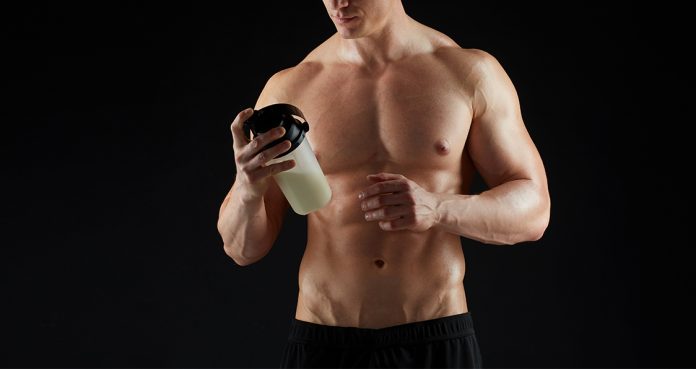
The Only 3 Supplements You Should Be Using
The Only 3 Supplements You Should Be Using
The fitness industry is full of fads. The supplement companies have gotten better at marketing their products. Most of these companies invest more in marketing their products as compared to R&D.
As any marketing professional would confirm, the best way for a company to make more money is to get their customers to buy more products from them. The phenomena of selling a new product to an existing customer are known as cross-selling.
The idea of making more money can be tempting for anyone and we can’t blame the supplement companies for it. If a customer already has bought a whey protein powder, selling him another tub of the same product won’t be effective in moving the supplement company’s balance sheet.
On the other hand, the supplement company could bundle up the whey protein supplement with another supplement like a BCAA powder and a guarantee that it will give the consumer better results. Most of the people buying supplements to improve their bodies won’t mind spending a few more bucks every month in hope for better results.
Hardly do these buyers know, these additional supplements will minutely budge the needle. There is no doubt technology is getting better with time and so are the supplements. But the question is, do you need all the supplements a supplement company has in its catalog?
The simple answer is a no. Bodybuilding has been around for a long time and many bodybuilders made it big with the help of few supplements and so can you. Most of the athletes endorsing new supplements don’t use the products themselves. If they can do without it, so can you.
Whey Protein
If you’ve been around the fitness scene for some time, you would know the importance of whey protein by now. Most bodybuilders and fitness athletes swear by whey protein. Many of these athletes consume the protein powder multiple times in a day.
Whey protein powder contains essential amino acids which are absorbed quickly by the body. Studies show whey protein can help you increase strength, gain muscle and lose significant amounts of body fat.
You can also check out our official buyers guide for the best protein powders of the year right here. Take the guesswork out of perfecting your supplementation with our helpful guide.
Pre-Workout Supplements
Even the best of bodybuilders have days when they don’t feel like training. Pre-workout supplements can be the push you need on these days. Some pre-workout supplements can take your workouts to the next level by supplying you with energy, mental focus, and muscle pumps.
Some pre-workouts supplements contain stimulants. After some time your body can get accustomed to these stimulants and might stop responding to them. It is recommended that you cycle using the pre-workout supplements.
Find the perfect pre-workout to fit your lifestyle with our buyers guide of the best pre-workouts of the year right here.
Creatine
Creatine is a controversial supplement, and a lot has been said about it. Many people think using creatine can harm your kidneys, liver, and heart. Many studies have proved creatine is a completely safe supplement and has no side effects when used in moderation.
Creatine is a chemical which is naturally formed in the human body and is also found in red meat and seafood. Creatine can improve exercise performance and can help you complete more sets and reps which can, in turn, lead to gaining muscle mass.
Check out our official buyers guide for the best creatine on the market this year right here. We break down the pros and cons of the top creatine supplements for bodybuilders.
What supplements do you use?
Let us know in the comments below. Also, be sure to follow Generation Iron on Facebook and Twitter.
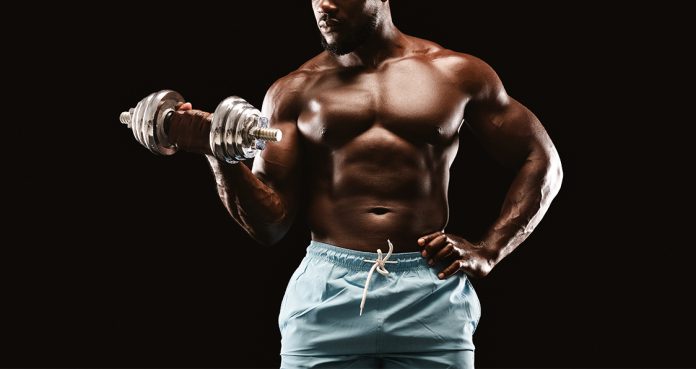
Become Immortal: The 3 Best Exercises That Will Make You Live Longer
Live long with the power of iron.
Respect your elders. Throughout childhood most of us have heard this term in some form or another. And although we did respect grandma and grandpa we think it’s safe to say none us wanted to look like them. If your grandpa was Jack Lalanne then I’ll give you that one. Fortunately – for the rest of us – we don’t have to. According to modern day science you can have the wisdom that comes with age and still keep the body of Conan The Barbarian. How? With some good ole’ fashion perspiration and inspiration my friend. Besides, I’m sure we would’ve respected grandpa even more if could dead 400 lbs…just sayin’.
According to one of the largest studies done on human gene expression, aging profoundly affects skeletal muscle, including loss of muscle mass and strength and increasing the levels of fat and connective tissue. This condition is known as age-related sarcopenia. However, sarcopenia can be combated with physical exercise as it is shown to counteract the effects of aging on certain genes.
“Strikingly, we find that genes that are associated with both aging and physical capacity are largely counteracting. The presented data thereby support efforts to maintain high physical fitness in an aging population to counteract negative effects on mitochondrial function.”
Even more interesting is that the body does not have an age-limit on improvement by exercise. Exercise, particularly weight lifting, have shown health improvements from people 80-90 years old. And the only reason that we can’t say even older is that is the oldest sample tested. It’s postulated that at any age exercise can have benefits when applied properly. So now that you know exercise can keep your engine burning for a long time what are the best ones to do? We’ve got a couple of suggestions.
The Sled Pull
Although recent to the fitness world in America the sled pull has been performed for decades by our Scandinavian logger friends. That’s right, the sled Pull was originally a log pull, and they didn’t tweet about it either. The sled pull is awesome because it’s a functional movement exercises which means it’s easily applicable to everyday life. Not only will it keep you out of the wheelchair but out of the physical therapist office as well. It’s lack of eccentric loading means it causes minimal wear on your body, greatly reducing the chance of injury or soreness. “I’m falling and I can’t get up”, not for you.
Squats
We know this is an obvious one but who doesn’t like hearing they’re right anyway? Simply put this is one of the best bone density, muscle building exercises out there. Why spend your golden years drinking lemonade on a porch when you can spend it hanging off the side of a cliff? This full body weight bearing exercise will help stave of things like osteoporosis and leave the doctor’s office as empty as high noon in a western.
Cardio
Whether you run a marathon, play racquetball, or swim, it really doesn’t matter. Just keep your cardio rate up for an extended period of time. The shortness of breath commonly associated with a set of stairs and old age can become a thing of the past. Pick a fun cardio workout that you enjoy doing and try to do it atleast twice a week. Better yet join a rec team and play with others! Having fun in social settings have been repeatedly proven to keep you happier and healthier in the long run.
We know you were looking forward to riding one of those stair mobile thingys pedaled on daytime t.v., but “I’m falling and I can’t get up” is no longer part of your vocabulary. Get up, get out, and train!
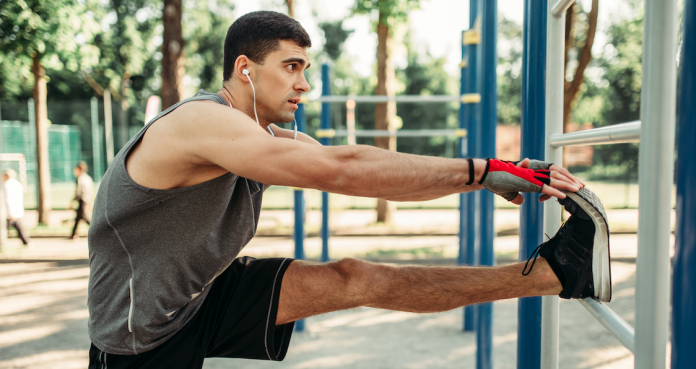
Are “Stretching Intervals” the Secret to Better Fitness?
What role does stretching play in your workout routine?
Most people in the health and fitness community will tell you that stretching is good for you, but the agreement ends there. In terms of anything more than that — how often should I stretch? What types of stretches should I be doing? Should I stretch before or after a workout, or both? — you will find thousands of camps, each with thousands of equally legitimate-sounding studies backing up whatever their personal belief is about the role of stretching in the workout.
We did a quick roundup online of what the research is really saying about stretching. Some experts even suggest that taking time to stretch during your workouts, rather than before or afterwards, is the most beneficial type of stretching you can be doing for your body.
Certified Pilates instructor Sarah James recently spoke with Well+Good to discuss her “stretch intervals” method, which consists of taking time to stretch in between reps during strength training: “It’s using time while you’re resting to get energy for your next exercise—you might as well be stretching, because you’re [using] every second of your time in a smart way.” Basically, since most of us just about collapse from exhaustion in between sets anyways, her view is that doing light stretching instead is a great way to maintain the body’s equilibrium.
The goal when working out is always to keep yourself as consistently active as possible for the duration of the workout. So, if you stretch between sets instead of lying on the floor like a beached whale, you’re doing a much better job of keeping your body fluid and in motion for as long as possible.
Another universal truth of stretching is that it increases flexibility. In the bodybuilding world, we tend to minimize flexibility as a way of thinking about the body in favor of traits we might prefer: strength, muscle mass, definition, etc. But here’s why it does matter to us: flexibility means durability.
Flexibility isn’t just useful in helping you touch your toes; flexibility helps your body heal faster, acclimates your muscles to change, and, most importantly, flexibility significantly reduces your chances of sustaining a serious injury in the gym. (At least, if you’re working out correctly, it does.) The range of motion you have in your joints shouldn’t be overlooked, whether your lifting weights or doing squats. Injuries like torn muscles, rotator cuff injuries, and even sprained ankles can keep people out of the gym for weeks or even months. So, flexibility is not only one of the core principles of fitness, it’s also an important preventive health measure.
Harvard Health gathered data from the American College of Sports Medicine on the perfect way to stretch. Their panel concluded that stretching is necessary at least two or three times a week, even for those who are not athletic, as a healthy part of body maintenance. So, for those of you who are working your bodies hard in the gym every day, stretching should be an every day thing as well, otherwise you’re not maximizing your workouts.
How do you stretch when you do your workouts? Let us know in the comments below!

Get Bigger Arms With This Simple Workout
Sleeve-Splitting Arm Workout
The idea of having big arms push many of us to get a gym membership. Huge arms have been associated with machoism for a long time. Ask a kid to flex his muscles, and he’ll most probably hit you with a front double bicep.
You need to pay equal attention to your biceps and triceps. You can’t go crazy with your bicep workouts while overlooking your triceps development. Muscle symmetry is important for strength and aesthetic purposes.
Some people hurt their gains by training their arms every single day. Training your arms every day won’t get you bigger arms. Doing this leads to overtraining since your muscles need time to recover and grow after a workout.
Many people train their biceps before their triceps on the arms day. This can lead to weak triceps since you might be exhausted by the time you start your triceps workout.
This can happen for any muscle you train second on a multi-muscle training day. To combat this in your arm workouts, you will be doing antagonistic supersets. In this advanced training technique, you superset different muscle groups in a single set. For, e.g., – you will be super-setting your biceps with your triceps. Follow this workout to get bigger arms.
Superset 1
Standing Cable Bicep Curls – 3 Sets 15 Reps
You would be starting with a cable exercise to pre-exhaust your muscles. This will help you get the same pump later in your workout while using relatively light weights. Use a straight bar attachment for this exercise.
Overhead Rope Cable Tricep Extension – 3 Sets 15 Reps
Your triceps consist of three heads; medial, long and lateral. You need to train all three to ensure an overall development. The overhead rope cable extensions target your long head. Using cables will help you maintain tensions on your triceps throughout the movement.
Superset 2
Dumbbell Curls – 3 Sets 15 Reps
Dumbbell curls is an incredibly effective exercise to target your biceps. In this exercise, rotate your hands outwards at the top of the movement. This will help in building the peak in your pythons.
Close Grip Bench Press – 3 Sets 15 Reps
Doing a compound exercise (multiple joints) can help build size and strength in your target muscle group. Close grip bench press helps with the overall development of your triceps. Make sure you have a complete range of motion while performing this exercise.
Superset 3
Concentration Curls – 3 Sets 15 Reps
It is always more effective to end your bicep workouts with an isolation exercise. Concentration curls were one of Arnold’s favorite exercise. This exercise helped him turn his biceps into mountain peaks. You need to maintain a mind-muscle connection throughout this exercise. Going through the motion won’t get you anywhere.
Tricep Dips – 3 Sets 15 Reps
Doing dips at the end of your workout can test what you’re made of. If body weight dips are too easy for you, feel free to add resistance bands or resistance using weights. Maintain a full range of motion and squeeze your triceps at the top of the movement to get the most of this exercise.
Which is your favorite triceps exercise? Let us know in the comments below. Also, be sure to follow Generation Iron on Facebook and Twitter.
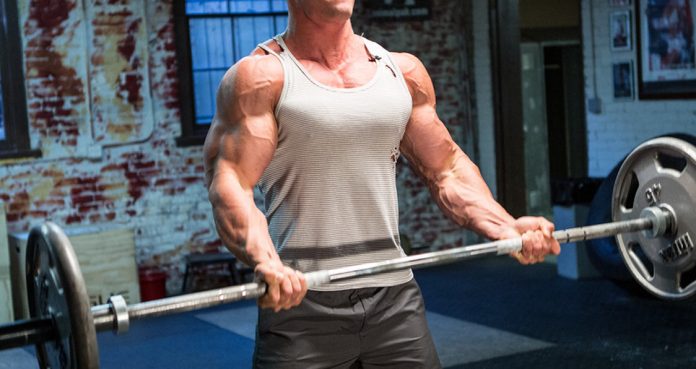
Get Bigger Arms With This Simple Workout
Sleeve-Splitting Arm Workout
The idea of having big arms push many of us to get a gym membership. Huge arms have been associated with machoism for a long time. Ask a kid to flex his muscles, and he’ll most probably hit you with a front double bicep.
You need to pay equal attention to your biceps and triceps. You can’t go crazy with your bicep workouts while overlooking your triceps development. Muscle symmetry is important for strength and aesthetic purposes.
Some people hurt their gains by training their arms every single day. Training your arms every day won’t get you bigger arms. Doing this leads to overtraining since your muscles need time to recover and grow after a workout.
Many people train their biceps before their triceps on the arms day. This can lead to weak triceps since you might be exhausted by the time you start your triceps workout.
This can happen for any muscle you train second on a multi-muscle training day. To combat this in your arm workouts, you will be doing antagonistic supersets. In this advanced training technique, you superset different muscle groups in a single set. For, e.g., – you will be super-setting your biceps with your triceps. Follow this workout to get bigger arms.
Superset 1
Standing Cable Bicep Curls – 3 Sets 15 Reps
You would be starting with a cable exercise to pre-exhaust your muscles. This will help you get the same pump later in your workout while using relatively light weights. Use a straight bar attachment for this exercise.
Overhead Rope Cable Tricep Extension – 3 Sets 15 Reps
Your triceps consist of three heads; medial, long and lateral. You need to train all three to ensure an overall development. The overhead rope cable extensions target your long head. Using cables will help you maintain tensions on your triceps throughout the movement.
Superset 2
Dumbbell Curls – 3 Sets 15 Reps
Dumbbell curls is an incredibly effective exercise to target your biceps. In this exercise, rotate your hands outwards at the top of the movement. This will help in building the peak in your pythons.
Close Grip Bench Press – 3 Sets 15 Reps
Doing a compound exercise (multiple joints) can help build size and strength in your target muscle group. Close grip bench press helps with the overall development of your triceps. Make sure you have a complete range of motion while performing this exercise.
Superset 3
Concentration Curls – 3 Sets 15 Reps
It is always more effective to end your bicep workouts with an isolation exercise. Concentration curls were one of Arnold’s favorite exercise. This exercise helped him turn his biceps into mountain peaks. You need to maintain a mind-muscle connection throughout this exercise. Going through the motion won’t get you anywhere.
Tricep Dips – 3 Sets 15 Reps
Doing dips at the end of your workout can test what you’re made of. If body weight dips are too easy for you, feel free to add resistance bands or resistance using weights. Maintain a full range of motion and squeeze your triceps at the top of the movement to get the most of this exercise.
Which is your favorite triceps exercise? Let us know in the comments below. Also, be sure to follow Generation Iron on Facebook and Twitter.
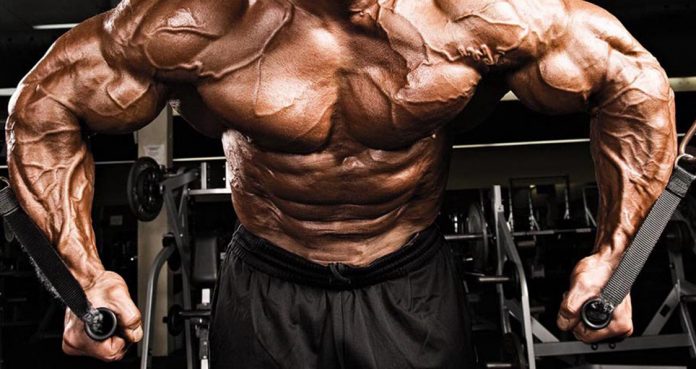
The 5 Best Machines For Getting Shredded
The 5 Best Machines For Getting Shredded
With the evolution of bodybuilding, researchers have come up with ways to speed up the process of gaining muscle mass with the help of better nutrition and advanced training techniques. Over the years machines used in the gyms have gotten better.
Using machines can help you achieve your desired results while preventing injuries. Many bodybuilders use machines while preparing for competitions to avoid injuries. Machines are great for beginners as they limit the range of motion and avoids recruiting muscle stabilizers.
These are the 5 Best Machines
1. Cable Crossover Machine
Cable crossover station is one of the most important equipment in a gym. You can do a variety of exercises targeting different muscle groups on this machine. If your gym doesn’t have a cable crossover machine, you should start looking for a new gym.
Using cables has a different effect on your muscles as compared to using free weights. You have constant tension on your muscles during the eccentric and concentric movement while using the cables.
2. Smith Machine
Smith machine is another gym essential. It is a great equipment for people who can’t perform exercises like the bench press or squats due to problems like joint pains. The smith machine avoids recruiting secondary muscle groups as your path of motion is fixed.
The smith machine is great at developing your lagging muscles as it limits your movement. Let us say you have a overdeveloped glutes and weak quads. You can eliminate your glute recruitment and focus entirely on your quads by placing your feet in front of you.
3. Pec Fly Machine
The pec deck machine is nearly as effective as the bench press in activating the pectoralis major. Using the pec fly machine will help you in maintaining constant tension on your inner chest. This machine is a must for people who want striations and separation in their chest.
You can also work your rear delts on the pec fly machine. Sit with your chest against the pad to target your rear deltoids. Rear delts are a weak muscle group for most people. They make it even worse by not training them often.
4. Leg Press
You will hardly see a gym without a leg press machine. The leg press machine can help you in building muscle mass and strength in your lower body. The leg press also happens to be one of the most abused machines in a gym.
Many people load the machine with more weight than they can handle. You will see the best results while using the leg press machine by following a full range of motion. Excessive weight puts stress on your lower back and can result in an injury if you fail a rep.
5. Hammer Strength
Hammer strength is one the best equipment for training your chest. The hammer strength is incredibly effective for people who can’t bench press for some reason. Pros use this machine while preparing for a contest or during muscle rehab.
You target the same muscles while using the hammer strength as you do during the bench press. As you are in a leveraged position, you can use heavier weights on the hammer strength as compared to the flat bench press.
Which is your favorite machine?
Let us know in the comments below. Also, be sure to follow Generation Iron on Facebook and Twitter.
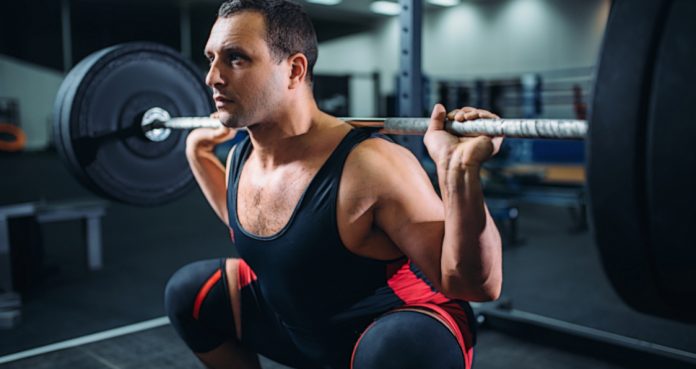
The Absolute Best Leg Exercises For Men
7 Workouts For Building Mass in the Glutes, Hamstrings and Quads
Leg-day tends to divide bodybuilders. There are those who really enjoy a hard leg-based workout and those who’d rather replace leg day with chest day. With so many methods and pieces of equipment at our disposal, it can be challenging to know where to start.
The methods employed and the exercises selected should be dictated by the primary goal that has been set. While it’s true that there will be similar components with the majority of leg workouts, each one should be tailored to a specific goal.
For example, understandably squats tend to be a part of the majority of leg workouts – however, there are a number of squat variations which can be used to focus on a specific muscle group. Additionally, there are a number of advanced training techniques – such as supersets and pre-exhaust – which can be utilized in order to bring about specific changes to the muscle.
To highlight the importance of specificity in training, let’s take an individual who is looking to start bodybuilding. It would not be sensible for them to immediately dive in to heavy squats, leg presses, and deadlifts, considering their lack of experience and readiness. Instead, they must first lay a solid foundation by establishing efficient movement. Only once this has been done, can they consider gradually moving on to heavier, more complex exercises.
7 Leg Workouts For Every Type of Goal
Taking this into account, the following 7 workouts all have a different focus. Each workout has been carefully designed so that it can easily be incorporated into a typical bodybuilding “split” program. Providing consistency and intensity are prevalent in one’s training, the muscles of the legs will be forced to adapt and improve in strength and size.
1) Building Foundations
The first workout of the 7 is perfect for the beginner or novice. There is no denying that the squat is one of the best leg development exercises that can be performed. However, being able to squat with safety and efficiency does not happen overnight – practice is required.
When learning to squat, or when learning any new skill, the movements may initially feel strange, uncoordinated and unstable. This comes down to the nervous systems control over the body. When learning a new skill, it takes time and repetition in order to establish neural pathways in the brain and allow the body to “understand” the movements required (1).
The best example of this is a toddler learning to walk. Initially, they are unstable and can’t manage more than a few steps before falling to the floor. However, with practice, these neural pathways become established to the point that they can efficiently walk and falling over is no longer an issue.
Therefore, with this workout, the goal is to allow the user to get to grips with the movements required for the squat. Gradually, as efficiency and confidence improve, the load being lifted can be increased to maximize changes in leg strength.
The rest of the workout is heavily machine based, as machine-based exercises do not require as great a degree of coordination and understanding of movement as the squat. Incorporating weight machines at this stage is recommended as they will provide a controlled introduction to weight training and effectively load the muscles without running the risk of sustaining injury.
Exercise
Sets x Reps
Goblet Squat
4 x 10 – 12
Leg Press
3 x 10 – 12
Leg Extensions
3 x 10 – 12
Leg Curls
3 x 10 – 12
Calf Raises
3 x 15 – 12
2) Mass Building
When it comes to building size, it is important that we focus first on “big” compound exercises which target the greatest number of muscles. These exercises place a large stress on the muscles which forces them to adapt in size. It would make sense to start with the exercises that require the largest degree of exertion and energy as these are the exercises that will have the most profound effect on developing size.
Additionally, it is imperative that the overall training volume is relatively high and that we train to muscle failure often as a studies have indicated that these are important factors when it comes to packing on size (2).
Finally, it may be sensible to change the dynamic of specific exercises in order to target the muscles in a slightly different way. A good example that may be worth considering is altering foot placement with the leg press or squat. A slightly wider stance will take the emphasis from the quadriceps and shift it onto the glutes and hamstrings, whereas a narrower stance will accentuate the quads.
This workout involves a number of free weight and resistance machine exercises that target all 4 muscle groups of the legs – the glutes, quads, hamstrings and calves. Additionally, it uses an advanced training method known as the reverse pyramid which simply involves varying the number of reps and load lifted per set.
The reverse pyramid is beneficial as it accommodates for muscular fatigue and allows the user to continually hit maximal fatigue with each and every set. As the rep range increases, look to decrease the load that is being lifted and look to reach muscular failure with each set.
Exercise
Sets x Reps
Barbell Squat
4 x 6, 8, 10, 12
Leg Press
4 x 8, 10, 10, 12
Dumbbell Walking Lunges
3 x 10, 12, 14
Leg Extensions
3 x 10 – 12
Lying Leg Curls
3 x 8, 10, 12
Calf Raises
4 x 10, 10, 12, 12
3) Improving Definition
For many, the belief is that high reps and light weight is optimal for building muscle definition. However, research does not seem to support this theory. Application of heavy loads are equally as effective at maintaining muscle size and developing muscle tone.
Ultimately, the strength training method used will be less significant than one’s nutrition when it comes to enhancing leanness. If leanness is the goal, the primary focus should be on nutrition to bring about a reduction in overall stored body fat. Without a thick layer of body fat over the top of the muscles, they will immediately look more defined and lean. This can only be done by maintaining a calorie deficit over a prolonged period.
Strength training is super important in a calorie deficit. Without appropriate training, there may be a reduction in muscle size along with a reduction in body fat, however, regular strength training can prevent muscle atrophy (3).
The workout involves a multitude of compound exercises, straight sets and supersets to target all muscle groups of the legs. Supersets involve completing one exercise straight into a second exercise (with no rest); this method can be used to effectively increase the overall volume of one’s training and therefore assist in maintaining muscle size.
Exercise
Sets x Reps
Smith Machine Squat
4 x 8 – 10
Leg Press (Superset 1)
3 x 10 – 12
Goblet Squat (Superset 1)
3 x 10 – 12
Barbell Reverse Lunge (Superset 2)
3 x 10 – 12
Leg Extensions (Superset 2)
3 x 12 – 15
Lying Leg Curls (Superset 3)
4 x 10 – 12
Donkey Calf Raises (Superset 3)
4 x 12 – 15
4) Glute Building
The following 3 workouts will target a specific muscle group. For many bodybuilders, they may find that a specific muscle group is perhaps lagging behind the others and therefore requires additional attention. Selecting the correct exercises is imperative when looking to target a specific muscle group as some exercises are undoubtedly superior than others.
With this in mind, each of the following exercises has been carefully selected based on the fact that they activate the muscles of the glutes to a large degree. The workout structure is similar to the mass gaining workout and uses a reverse pyramid to encourage muscular fatigue with each set.
Exercise
Sets x Reps
Wide Stance Barbell Squat
4 x 6, 8, 10, 12
Leg Press
3 x 8, 10, 12
Barbell Reverse Lunge
3 x 10 -12
Unilateral Cable Kickback
3 x 8, 10, 12
Romanian Deadlift
4 x 8, 8, 12, 12
5) Hamstring Building
Unfortunately, for so many individuals, the hamstrings are neglected as many of the movements and exercises that we regularly perform are quad and glute dominant. This can lead to an overdevelopment of the quads and glutes while simultaneously underdeveloping the hamstrings. Failing to develop the hamstrings will not only hamper bodybuilding progress but can actually increase the risk of injury.
Once again, the exercises that have been selected place the greatest demand on the hamstrings and will therefore accelerate the rate of hamstring development. The romanian deadlift, for example, has been found to be one of the best exercises for activating the hamstrings and increasing overall hamstring strength (4).
Following a similar structure as the glute-specific workout, this workout uses reverse pyramid sets to increase volume, intensity and accelerate the rate of muscle hypertrophy.
Exercise
Sets x Reps
Romanian Deadlift
4 x 6, 8, 10, 12
Hamstring Bridge
3 x 8, 10, 12
Glute Ham Raises
3 x 8, 10, 12
Leg Curl (Dropset)
3 x 10, 10, 12
6) Quad Building
The final muscle-specific workout, is the quad building workout which places a greater emphasis on the quads through the use of compound exercises, such as the front squat, and isolation exercises, such as leg extensions.
Using a combination of compound (multijoint) and isolation (single joint) exercises is recommended for all muscle-targeted workouts. Compounds contribute towards making substantial improvements in terms of leg strength and size whereas the isolation exercises will place a greater load on a specific muscle (in this case, the quads), to promote growth further and assist in improving compound lift performance.
The quad workout follows exactly the same structure as the hamstring specific workout. This is because, ideally, these muscles should develop at a similar rate in terms of both strength and size. Equal development is important when we consider that these two muscles work together to control and generate movement around the knee and hip. Having one muscle group significantly stronger than the other may increase one’s injury risk.
Exercise
Sets x Reps
Barbell Front Squat
4 x 6, 8, 10, 12
Hack Squat
3 x 8, 10, 12
Leg Press
3 x 8, 10, 12
Leg Extensions (Dropset)
3 x 10, 10, 12
7) Plateau Busting
In any bodybuilding journey, there will be times where a plateau is reached. This is simply where strength and size gains have become stagnant. To efficiently move past any plateau, changes need to be made to one’s training in order to introduce a new training stimulus to the body (5). As a result of this new stimulus, the body will react by adapting and improvements in strength and size will recommence.
This workout uses an advanced training method known as pre-exhaust. The purpose of this method is to partially fatigue the muscles through an isolation exercise before moving onto a heavier compound exercise. This method will push the muscles to their limit and as a result, force them to adapt.
Do be aware that with this method, it may be necessary to lower the weight for the compound lifts. This is because the muscles will already be fatigued prior to performing the compound lift and as a result, it may not be possible to lift as heavy as normal.
Exercise
Sets x Reps
Leg Extensions
5 x 8 – 10
Smith Machine Squat
4 x 8, 10, 10, 12
Hack Squat
3 x 10 – 12
Dumbbell Lunges
3 x 10 – 12
Final Word
In order to maximize results and advance towards the set goal, look to perform the chosen workout over a 4-8 week period. After completing this stint, assess progress and consider switching over to another specialized leg workout to continue improving. By doing this, significant changes in leg size and strength will occur, providing that the workouts are performed consistently and with the right intensity.
For more news and updates, follow Generation Iron on Facebook, Twitter, and Instagram.
References:
1- “Neural Centers Responsible for Movement”.
2- “Resistance Training Volume Enhances Muscle Hypertrophy but Not Strength in Trained Men”.
3- “Preserving Healthy Muscle during Weight Loss”.
4- Schmitt, Kayla (September 28, 2017). Electromyographic comparison of the hamstring muscles during various exercises
5- Sports Health. 2010 Nov; 2(6): 509–518. doi: 10.1177/1941738110375910. PMCID: PMC3438871.PMID: 23015982
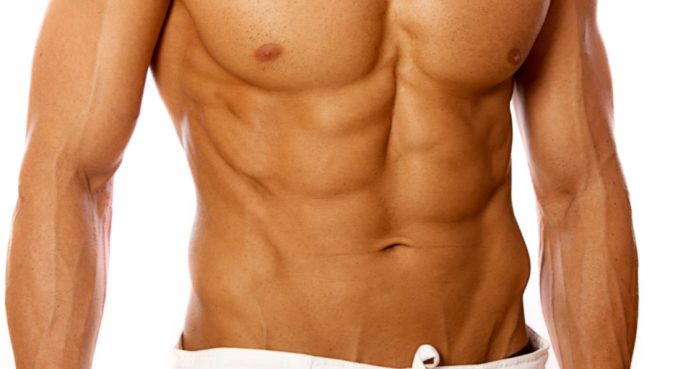
A Killer Circuit Workout To Smoke Your Abs
Build Your Dream Abs With This Circuit Workout
Abs are one of the most desired muscles and yet only a few possess them. A set of aesthetically appealing washboard abs are the result of proper training, diet, and recovery. You can’t build the abs of your dreams if one of the components is out of proportion.
Performing a circuit training workout can be more effective in developing the shape and conditioning of your abs as compared to the vanilla training routine of 3 sets of 10-12 reps. Try this ab workout the next time you train your abs and let us know how it goes.
You’ll be performing a total of three circuits where each circuit will have five exercises. After each exercise, you’ll rest for 30-seconds before performing the next exercise. After completing a circuit, you’ll rest for a minute before starting the second round.
Reverse Crunches – 20 Reps
In this circuit workout, you’ll be training your midriff from all the angles to ensure overall development. The reverse crunches work the middle and lower abs and are one of the most underutilized exercises when it to abdominal development.
Lie down with your back on a floor mat and your arms placed at your sides. Keep your feet flat on the floor by bending at your knees. Bring your quads to your chest by lifting your hips off the floor while maintaining the bend in your knees. Slowly return to the starting position and repeat for the recommended reps.
Russian Twists – 20 Reps (Each Side)
Obliques are one of the most overlooked muscles when it comes to abdominal training. The obliques are the fish gill-like muscles at the side of your abs. Twisting and turning movements are the ones which target the obliques most effectively.
If you feel the bodyweight version of the exercise is too easy for you, feel free to add resistance by holding a weight plate in front of your chest with your arms extended over your knees.
Cable Crunches – 20 Reps
While you don’t need to use added resistance in every ab exercise, using weights can help bring out the definition and separation in your midriff. Make sure you’re following a full range of motion while performing all the exercises mentioned in the article.
If you want to do this ab workout at home, you can perform the orthodox crunches instead of the cable version. Controlled breathing plays an important role in abdominal training. You should be breathing out and squeezing your abs at the contraction point and breathing in while returning to the starting position.
Leg Raises To Heels To Heaven – 20 Reps
Leg raises to heels to heaven bring the goodness of two exercises into one. Lie down on an exercise mat with your arms extended at your sides. Perform a leg raise by elevating your legs off the floor while keeping your legs straight.
As you form a 90-degree angle with your legs and the floor, raises your legs towards the roof by lifting your hips off the floor. Return to the starting position in the same manner with a slow and controlled movement.
Planks – 1 Minute
Most people make the mistake of overlooking their core strength when it comes to ab training. Core strengthening exercises will not only help you in shaping your abs but will also improve your performance in functional exercises.
Perform the orthodox planks in the first set and switch to doing the side planks in the next two circuits. If you give your all in this circuit workout, your abs will be on fire by the end of the first circuit and asking for mercy by the last.
Header image courtesy of Envato Elements
How often do you train your abs? Let us know in the comments below. Also, be sure to follow Generation Iron on Facebook, Twitter, and Instagram.
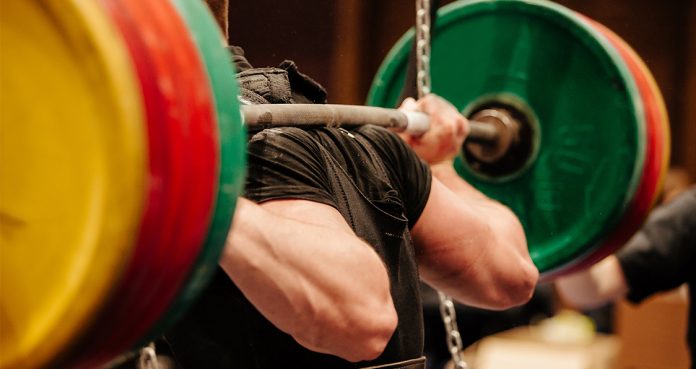
GUIDE: Become A Master Of The Squat
Why drink and drive when you can squat and fly?
The squat is one of the most natural and beautiful movements in bodybuilding. It’s also a standard position for bearing massive weight. The squat is an exercise we’ve all performed and think we’re doing right. After all there’s not much to it right? Wrong. Like all full body exercises, the squat is a movement that requires a perfect balance of many moving parts. Everything from breath to foot position should be considered before attempting this seemingly simple move. So do you want to master the squat or continue doing it half-assed like the rest of the lames at the gym? We thought so, read on.
Pre Squat
Before even attempting the squat there’s somethings you want to consider. Breathing correctly and having a straight but rigid spine will help give you stability to up your gains.
Breathing
We know it may seem monotonous and you do it without thinking anyway but being mindful of your breathing can effect not only your numbers but your life. You’d be surprise at how many times we clam up or stop breathing completely before a big task. Instead of breathing up and down try breathing in and out. Put your hand on your collar bone, if it goes up when you breath in then you’re doing it wrong. Try belly breathing, make sure your belly expands and contracts when you breathe out and in, you will physically see your rib cage going out and in when you’re doing it right.
Rigid Spine
Everyone knows you’re suppose to keep your spine straight but few people keep in mind to keep their torso rigid. This goes hand in hand with breathing, when you breathe out try and push out your obliques also. This should give you a flat stomach but visibly protruding obliques. Don’t overdo it now, it should feel fairly natural, the main thing is to make sure your center is firm and solid.
Other things to Consider
Things like lat engagement and clenching your cheeks (yes the bottom set) are also important before squatting. You can get lat engagement by simply pinching your shoulders back. The main thing to remember is that you are one solid unit, if a heavy weight was to fall on your shoulders from your standing position you should be able to bear it.
On The Bar
Now that you’ve been practicing your stance and your breathing let’s move onto the real deal stuff – the bar.
Unweighted bar
Get under the bar and get that good stance we spoke about earlier. This is where you want to work out all of your last minute kinks. So from top to bottom here’s how it goes.
Head neutral
Not to the floor, not to the sky. Find a spot where the floor meets the wall and hold your gaze.
Bend the bar
Actively pull into the bar with your two hands, this will help your posture and keep the bar tight to your body. You want your hands to be just wide enough to hold the securely behind, too lose and you won’t engage your lats.
Root your feet
You want to engage your feet but not the way you’re probably thinking. As opposed to just applying downward pressure try twisting your feet into the ground. The conscious effort to to pull your heels in will not only apply downward pressure but will pull your knees into optimal position.
At this point there’s nothing to it but to do it, or rather, the point where you’ve got to lift some heavy ass weights. We suggest you take your time and go through each of the stages we spoke about before. You’re breathing, your stance, and your on the bar last minute checklist. You’re going to notice that you’re still making some of the same mistakes but don’t be too hard on yourself, in time you will break those bad habits. We recommend you lift with a friend to make sure you’re doing all your reps correct to form. Start off small until your position becomes automatic and then start the youtube videos..
And hey – once you’ve mastered this or if you’re already a master check out the variations below to add something new to your routine.
Jump Squat
Cross your arms over your chest.
With your head up and your back straight, position your feet at shoulder width.
Keeping your back straight and chest up, squat down as you inhale until your upper thighs are parallel, or lower, to the floor.
Now pressing mainly with the ball of your feet, jump straight up in the air as high as possible, using the thighs like springs. Exhale during this portion of the movement.
When you touch the floor again, immediately squat down and jump again.
Repeat for the recommended amount of repetitions.
Kettlebell Pistol Squat
Pick up a kettlebell with two hands and hold it by the horns. Hold one leg off of the floor and squat down on the other.
Squat down by flexing the knee and sitting back with the hips, holding the kettlebell up in front of you.
Hold the bottom position for a second and then reverse the motion, driving through the heel and keeping your head and chest up.
Lower yourself again and repeat.
That about wraps it up. Follow through the guide above and you’ll be a master of the squat in no time. Make sure to hit us up in the comments with any other tips that you think makes you a master of the squat. Stay pumped.
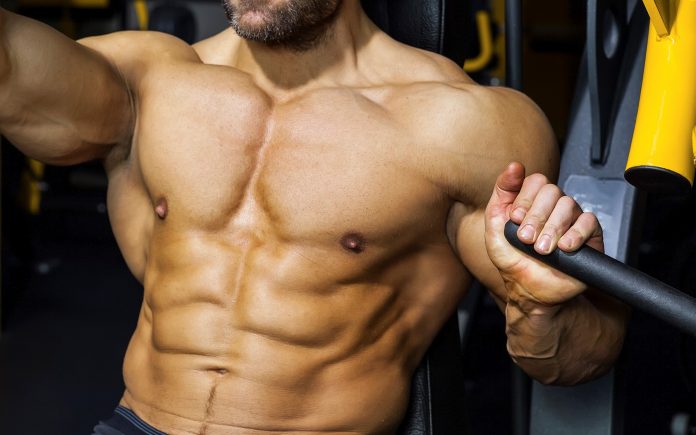
Could This Chest Exercise Be Even Better Than The Bench?
Build up your chest with this awesome exercise.
Chest exercises are pretty obvious at this point. When most bodybuilders look to improve their chest development they focus on a handful of exercises that have been popularized over the years. For our money, the bench press and dumbbell flyes are two of the best exercises you can perform to build a massive and strong chest. At least that’s the school of thought from most trainers and experienced bodybuilders.
That’s not to say that bench press and flyes aren’t the answer to improving your chest game, but as the old saying goes there’s more than one, in this case two, ways to skin a cat. One exercise that could potentially prove to be a better chest exercise than the bench and flyes are dips.
Dips have been at times sited as a potentially damaging exercise for the shoulders by some uninformed fitness gurus, but the reality is that it can greatly improve chest development. We’d go as far to say that it may even be better than if not or equal to the bench press and flyes in its importance and usefulness to chiseling the chest. If you have any doubts, then just take a look at the reasons why you should substitute the bench every now and then.
1. It’s a faster option
Dips are great for the chest for a number of reasons, one of them being that the exercise isolates the chest muscles. The motion for performing the dip requires the user to push in a downward motion with the arms while lifting your body up. The shoulders are also engaged in this motion but are under far less stress when with the bench. Since it’s a bodyweight exercise it also requires more tension and strength from the chest muscles in order to perform the motion. All this combines to making quicker chest gains.
2. Build functional strength along with your chest
Like we mentioned before, the chest dip is a bodyweight exercise. The isolation works great for building muscle specifically in the chest. Besides that however is the fact that you must lift your own body through space which will ultimately translate to core strength. Posture is also important with this exercise.
You body must remain static, your legs must be held in the same position, preferably bent at the knee and crossed. This kind of posture ultimately engages the chest, abs, shoulders, and back, meaning you can get major gains in multiple areas. The body working in concert with other muscles means gaining functional strength for other endeavors, lifting or otherwise.
3. Widens the chest
Another great benefit from doing chest dips is the development in chest width. What separates dips from the bench press and dumbbell flyes is that you’re able to not only work the chest, but work the rest of your upper body as well. As we just mentioned before the dip can engage not only the chest, but the back as well. That includes the upper back as well.
The dip can build the lats up nicely which is the antagonistic muscle to the chest. When you work the antagonistic muscle it allows for better development of the opposite muscle, in this case the chest. All in all, the chest dip is a multifaceted exercise that can work wonders for your entire upper body.
Do you perform chest dips in the gym? Let us know in the comments below and be sure to follow Generation Iron on Facebook and Twitter.
